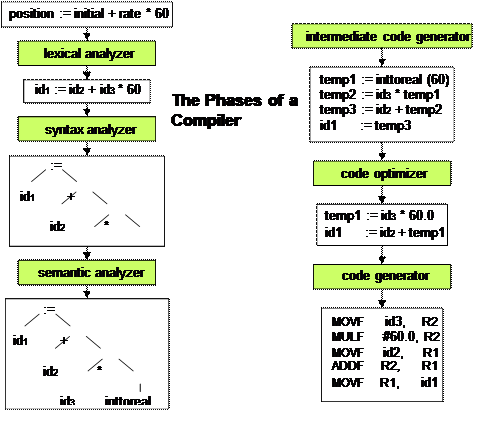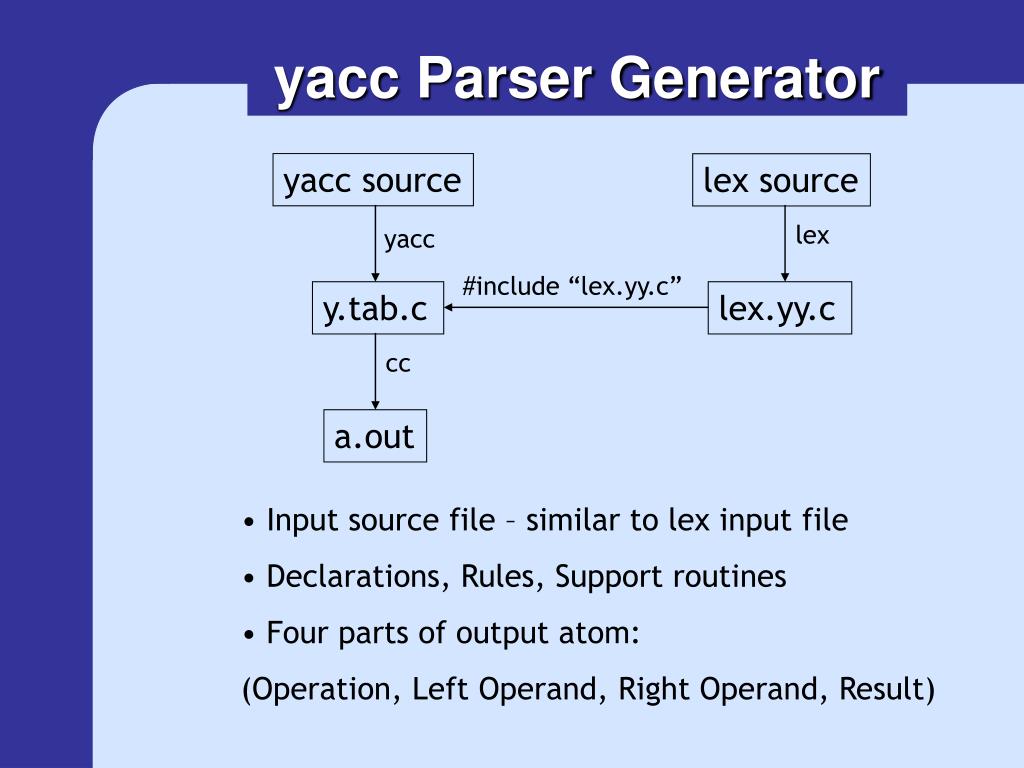


Pointer forward scans ahead until a pattern match is found. Two pointers to the input are maintained:ġ. Pointer lexeme_beginning, marks the beginning of the current lexeme, whose extent we are attempting to determine.Ģ.

If fewer than N characters remain in the input file, then a special character, represented by eof, marks the end of the source file.Using one system read command we can read N characters into a buffer.Each buffer is of the same size N, and N is usually the number of characters on one block.A buffer is divided into two N-character halves, as shown below.While we can make the buffer larger if we chose or use another buffering scheme, we cannot ignore the fact that overhead is limited. In the above example, if the look ahead traveled to the left half and all the way through the left half to the middle, we could not reload the right half, because we would lose characters that had not yet been grouped into tokens. Since the buffer shown in above figure is of limited size there is an implied constraint on how much look ahead can be used before the next token is discovered. If the look ahead pointer travels beyond the buffer half in which it began, the other half must be loaded with the next characters from the source file. In either case, the token itself ends at the second E. Without knowing whether DECLARE is a keyword or an array name until we see the character that follows the right parenthesis. For example, in a PL/I program we may see: The distance which the lookahead pointer may have to travel past the actual token may be large. In practice each buffering scheme adopts one convention either a pointer is at the symbol last read or the symbol it is ready to read. we view the position of each pointer as being between the character last read and the character next to be read. A look ahead pointer scans ahead of the beginning point, until the token is discovered. One pointer marks the beginning of the token being discovered. 1.9 shows a buffer divided into two halves of, say 100 characters each. For this and other reasons, it is desirable for the lexical analyzer to read its input from an input buffer. Often, however, many characters beyond the next token many have to be examined before the next token itself can be determined. LeBlanc “Crafting a Compiler with C”, Pearson Education, 2000.The lexical analyzer scans the characters of the source program one a t a time to discover tokens. Muchnick, “Advanced Compiler Design & Implementation”, Morgan Kaufmann Pulishers, 2000.ģ. David Galles, “Modern Compiler Design”, Pearson Education Asia, 2007Ģ. Ullman, “Compilers- Principles, Techniques, and Tools”, Pearson Education Asia, 2007.ġ. Introduction-The principle sources of optimization-Peephole optimization- Optimization of basic blocks-Loops in flow graphs- Introduction to global data-flow analysis-Codeġ.
WHAT IS INPUT BUFFERING IN COMPILER DESIGN CODE
Issues in the design of a code generator- The target machine-Run-time storage management-Basic blocks and flow graphs- Next-use information-A simple code generator-Register allocation and assignment-The dag representation of basic blocks - Generating code from dags Intermediate languages-Declarations-Assignment statements - Boolean expressionsCase statements- Backpatching-Procedure calls Run-Time Environments-Source language issues-Storage organization-Storage-allocation strategies. Type Checking- Type Systems-Specification of a simple type checker. Syntax Analysis- The role of the parser-Context-free grammars-Writing a grammar-Topdown parsing-Bottom-up Parsing-LR parsers-Constructing an SLR(1) parsing table. UNIT II SYNTAX ANALYSIS and RUN-TIME ENVIRONMENTS The role of the lexicalĪnalyzer- Input buffering-Specification of tokens-Recognition of tokens-A language for specifying lexical analyzer. Introduction to Compiling- Compilers-Analysis of the source program-The phasesCousins-The grouping of phases-Compiler construction tools.


 0 kommentar(er)
0 kommentar(er)
